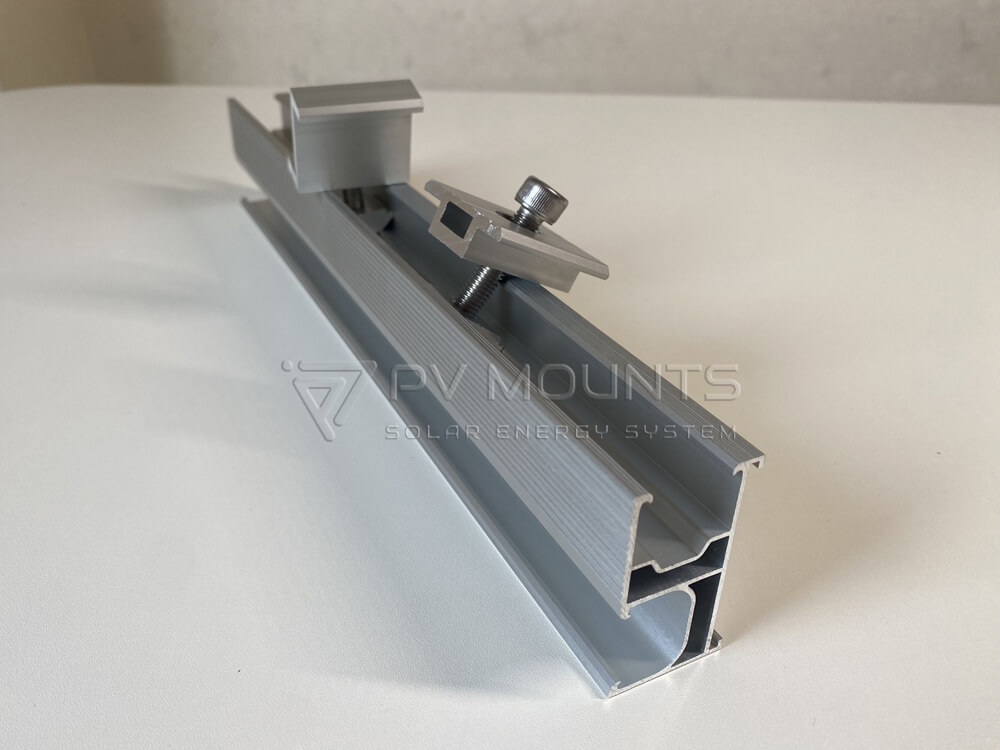Selectarea structurii de montare corecte pentru panouri solare este crucială. Această alegere influențează în mare măsură eficiența sistemului, determinând orientarea și unghiul panourilor față de soare, optimizând captarea luminii solare și transformarea acesteia în energie electrică. În plus, o structură bine aleasă și instalată asigură rezistența panourilor la factorii de mediu, protejându-vă investiția.
Acest articol își propune să vă ajute să parcurgeți diferitele tipuri de structuri de montare a panourilor solare, explorând definițiile, beneficiile, dezavantajele și scenariile ideale de utilizare ale acestora. Prin înțelegerea caracteristicilor fiecărui tip de montare, puteți lua o decizie corectă cu privire la modul cel mai potrivit pentru cerințele și circumstanțele dumneavoastră, asigurând o performanță optimă și longevitate pentru sistemul dumneavoastră de montare a panourilor solare.
Tabla de conținut
Structuri montate pe acoperiș
Fiind cel mai comun tip de structură de instalație solară și cel mai ușor de instalat, acestea sunt instalate direct pe acoperișul clădirii pentru o utilizare eficientă a spațiului.
Există două tipuri principale de structuri de montare pe acoperiș: Flat și Pitched. Sistemele de montare pe acoperiș plat sunt concepute pentru clădirile cu acoperiș plat sau cu pantă redusă, fiind fixate de obicei cu greutăți sau balasturi pentru a evita penetrarea acoperișului. Suporturile pentru acoperișuri înclinate sunt concepute pentru acoperișuri înclinate, adesea fixate direct pe căpriorii acoperișului pentru stabilitate maximă.
Avantajele sistemului solar montat pe acoperiș includ eficiența spațiului, costurile de instalare mai mici și lipsa nevoii de teren suplimentar. De asemenea, acestea sunt de obicei mai ușor de conectat la rețeaua electrică existentă. Cu toate acestea, orientarea și unghiul lor sunt determinate de acoperișul existent, care ar putea să nu fie întotdeauna optim pentru expunerea la soare. De asemenea, acestea pot fi mai puțin accesibile pentru întreținere și pot provoca deteriorarea acoperișului dacă nu sunt instalate corespunzător.
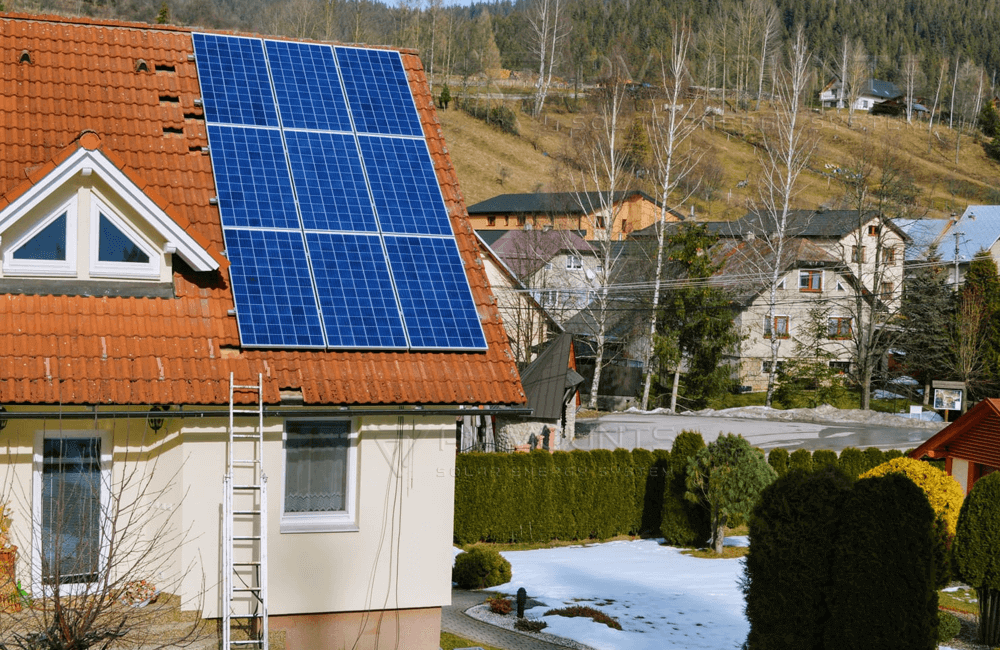
Structurile de montare a panourilor solare pe acoperiș sunt potrivite pentru clădirile cu acoperișuri mari și puternice și orientare favorabilă la soare, inclusiv pentru casele de locuit și clădirile comerciale. Aceste structuri trebuie să aibă acoperișuri robuste, să respecte codurile locale și regulile asociației de proprietari care permit instalarea panourilor solare.
Structuri montate la sol
Structurile de montare solară pe sol sunt instalate pe sol în loc de acoperiș. Acestea sunt de obicei instalate pe structuri de oțel sau aluminiu care sunt fixate pe pământ, fiind adesea utilizate în terenuri solare la scară largă sau atunci când montarea pe acoperiș nu este disponibilă.
Există două tipuri: Înclinare fixă și înclinare reglabilă. Structurile cu înclinare fixă au panouri solare amplasate la un anumit unghi și fixe. Pe de altă parte, sistemele cu înclinare reglabilă permit ajustarea manuală a unghiului panourilor pentru a optimiza expunerea la lumina soarelui pe tot parcursul anului.
Avantajul structurilor montate la sol constă în posibilitatea de a poziționa și orienta panourile pentru o expunere maximă la soare, indiferent de orientarea clădirii. De asemenea, acestea sunt mai accesibile pentru întreținere. Cu toate acestea, acestea necesită o suprafață mai mare, iar suprafețele de teren limitate nu sunt recomandate. Instalarea structurilor montate la sol poate fi mai costisitoare și mai complexă, din cauza pregătirii necesare a terenului și a eventualelor reglementări zonale.
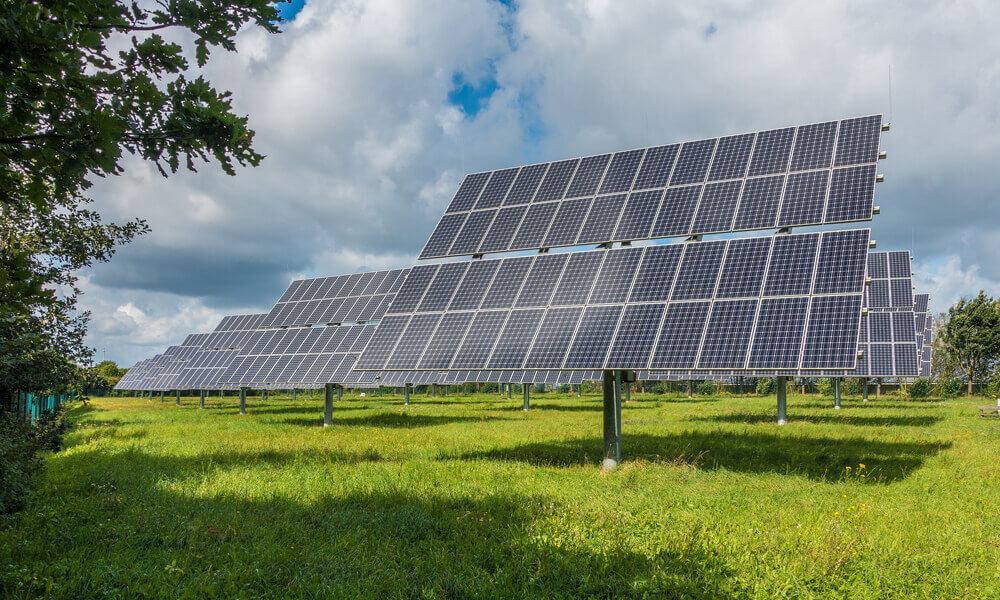
Sistemele solare montate la sol sunt ideale pentru locațiile cu spațiu amplu de teren. Sunt, de asemenea, o soluție bună atunci când acoperișul nu este potrivit pentru panourile solare din cauza dimensiunii, umbririi, orientării sau problemelor structurale. Instalații solare comerciale, ferme solare sau amplasamente rezidențiale cu terenuri de mari dimensiuni.
Structuri montate pe stâlpi
Structurile solare montate pe stâlpi sunt montate pe stâlpi singulari, adesea utilizați în situații în care spațiul este limitat sau solul și acoperișul nu sunt adecvate pentru montare. Aceste structuri pot fi staționare sau echipate cu un sistem de urmărire pentru a urma traiectoria soarelui.
Avantajul montajului pe stâlp este poziționarea flexibilă, care permite instalarea panourilor solare într-o varietate de locații. Acestea oferă, de asemenea, acces ușor pentru întreținere și potențialul de urmărire a soarelui. Oricum, acestea gestionează mai puține panouri per stâlp, iar procesul de instalare poate fi mai complicat și mai costisitor din cauza necesității unei structuri de stâlpi fermi și stabili.
Structurile montate pe stâlpi sunt cele mai potrivite pentru locațiile în care instalațiile la sol sau pe acoperiș nu sunt fezabile, din cauza constrângerilor cum ar fi spațiul limitat, condițiile precare ale acoperișurilor sau limitele de reglementare. Acestea sunt deosebit de eficiente în zonele fără rețea care necesită eficiență solară maximă prin urmărirea soarelui.
Structuri solare montate pe sisteme de urmărire
Sistemele de montare cu urmărire sunt complexe și se deplasează pentru a urma calea luminii solare pe tot parcursul zilei. Prin alinierea panourilor direct cu lumina soarelui, structura montată cu sistem de urmărire îmbunătățește semnificativ producția de energie a panourilor solare, asigurând expunerea maximă la soare.
Două tipuri de structuri de urmărire sunt utilizate pe scară largă: Cu o singură axă și cu două axe. Sistemul de urmărire cu o singură axă se deplasează de la est la vest, urmând traiectoria zilnică a soarelui. Sistemele de urmărire cu axă dublă, în plus față de mișcarea de la est la vest, se adaptează, de asemenea, la schimbarea înălțimii soarelui pe cer pe tot parcursul anului, oferind o colectare maximă posibilă a energiei solare.
Principalul avantaj al structurilor de urmărire este creșterea producției de energie, deoarece acestea maximizează cantitatea de lumină solară pe care o primesc panourile. Cu toate acestea, acestea sunt de obicei mai costisitoare și mai complicate de instalat și de întreținut decât alte tipuri. Este nevoie de mai mult spațiu pentru a evita umbrirea panourilor adiacente pe măsură ce acestea se deplasează.
Suporturile de urmărire sunt cea mai bună soluție pentru zonele spațioase, bogate în soare, de obicei în instalațiile solare la scară largă, în locațiile rezidențiale sau comerciale cu spațiu nerestricționat care urmăresc obținerea unei cantități maxime de energie și în instalațiile off-grid care necesită o generare optimă de energie.
Sisteme fotovoltaice integrate în clădiri (BIPV)
Sistemele fotovoltaice integrate în clădiri (BIPV - Building-Integrated Photovoltaics) sunt panouri sau materiale solare integrate în construcția unei clădiri și nu adăugate ulterior. Acestea pot include materiale fotovoltaice încorporate în ferestre, țigle, fațade și altele, transformând clădirea în sine într-un generator de energie.
BIPV au avantajul unui design plăcut, al eficienței spațiului și al multifuncționalității atât ca material de construcție, cât și ca generator de energie. De asemenea, BIPV pot compensa costurile de construcție prin înlocuirea materialelor de construcție convenționale. Cu toate acestea, instalarea și înlocuirea lor pot fi mai costisitoare, iar orientarea lor este fixă în funcție de designul clădirii, ceea ce poate să nu fie optim pentru expunerea la lumina soarelui.
BIPV este ideal pentru construcțiile noi sau pentru renovările majore în care proiectarea clădirii poate găzdui și optimiza aceste sisteme. Aceasta include atât clădirile rezidențiale, cât și cele comerciale. BIPV este disponibil în special în zonele urbane, unde spațiul este limitat, iar instalațiile solare tradiționale ar putea să nu fie fezabile.
Suporturi solare plutitoare
Sistemele solare plutitoare, cunoscute și sub denumirea de sisteme fotovoltaice plutitoare, sunt panouri solare montate pe pontoane și plutite pe corpuri de apă precum rezervoare, iazuri sau lacuri. Acest tip din ce în ce mai popular de instalație solară permite utilizarea benefică a suprafețelor de apă pentru producerea de energie solară.
Suporturile solare plutitoare utilizează suprafețe de apă neocupate, previn utilizarea terenurilor și pot reduce evaporarea și pot controla algele. Efectul de răcire al apei sporește eficiența panourilor. Cu toate acestea, instalarea și întreținerea lor pot fi mai dificile decât sistemele terestre și nu sunt potrivite pentru apele turbulente sau zonele cu trafic intens de nave.
Suporturile solare plutitoare sunt perfecte pentru zonele cu ape calme substanțiale, inclusiv rezervoarele și lacurile. Acestea sunt excelente pentru regiunile cu terenuri rare sau dens populate care doresc să sporească capacitatea solară fără utilizarea terenurilor. Industriile cu corpuri mari de apă, cum ar fi instalațiile de tratare a apelor reziduale sau fermele cu iazuri de irigare, beneficiază, de asemenea, de aceste sisteme.
Carport Montare solară
Carport Solar montaj sunt instalate deasupra carports - structuri concepute pentru a acoperi vehiculele parcate. Aceste sisteme au un scop dublu, oferind umbră și protecție pentru vehicule, transformând în același timp lumina soarelui în energie electrică.
Suporturile pentru copertine servesc atât ca protecție a vehiculelor, cât și ca generatoare de energie, folosind eficient spațiul de parcare și îmbunătățind estetica. Cu toate acestea, acestea costă adesea mai mult decât montajele pe acoperiș din cauza necesității unei structuri independente. De asemenea, expunerea lor solară depinde de dispunerea carportului, ceea ce înseamnă că nu există o generare maximă de energie solară.
Sistemul de montaj solar Carport este cel mai potrivit pentru case, întreprinderi sau instituții cu zone mari de parcare care primesc lumină solară suficientă. Acestea sunt deosebit de valoroase în climatele calde, unde umbra pentru vehicule este benefică. De asemenea, montajele pentru carport servesc bine în locurile în care instalațiile pe acoperiș sau la sol nu sunt fezabile sau de dorit.
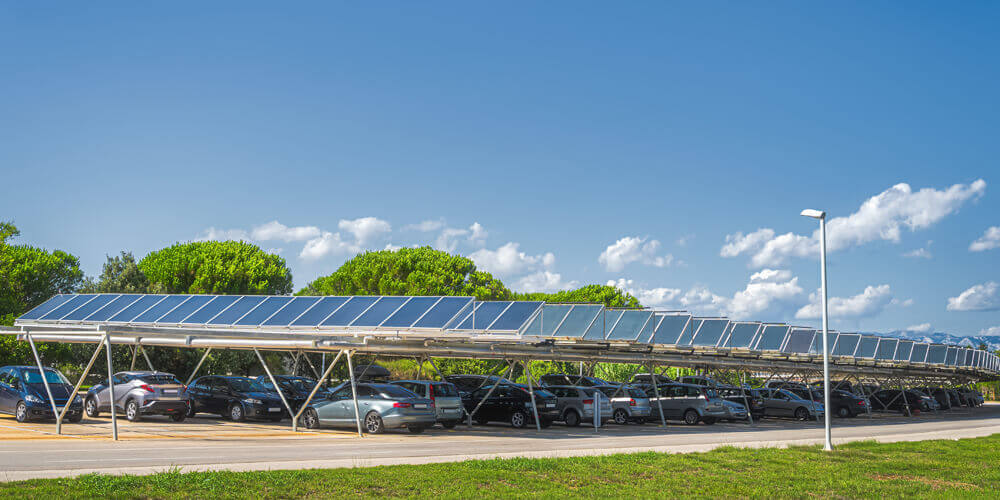
Balcon Solar Mounting
Suporturile solare pentru balcoane sunt instalații solare de mici dimensiuni concepute pentru a fi amplasate pe balcoanele clădirilor. Acestea oferă posibilitatea generării de energie solară în mediul urban sau în clădiri înalte, unde instalațiile solare tradiționale nu pot fi fezabile.
Suporturile solare pentru balcoane prezintă avantajul de a oferi energie solară locuitorilor din mediul urban care nu au alte opțiuni. Acestea sunt de obicei mai ușor și mai ieftin de instalat decât sistemul tradițional de montare solară. Cu toate acestea, capacitatea lor de generare a energiei este semnificativ mai mică din cauza dimensiunilor lor mai mici, iar eficiența lor depinde în mare măsură de orientarea balconului și de accesul liber la lumina soarelui.
Suporturile solare pentru balcoane sunt o opțiune bună pentru locuitorii din zonele înalte sau urbane care doresc să beneficieze de energia solară, dar nu au acces la un acoperiș sau la un spațiu la sol pentru o instalație solară tradițională. De asemenea, acestea sunt potrivite pentru persoanele care locuiesc în chirii, unde instalarea unui sistem solar la scară largă nu este permisă.
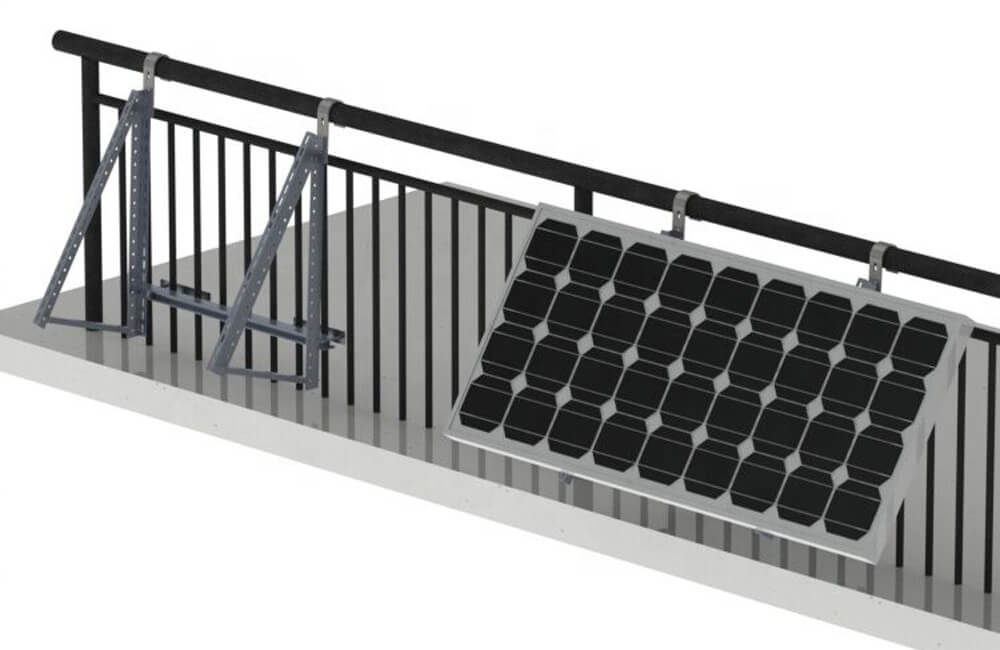
În concluzie
Într-un cuvânt, fiecare tip de structuri de montare a panourilor solare are avantajele, dezavantajele și cazurile sale ideale de utilizare, de la instalațiile de utilități la scară largă până la locuitorii urbani individuali care doresc să genereze energie solară.
Alegerea structurii de montaj solar potrivite, la fel de importantă ca și alegerea panourilor în sine, trebuie să se alinieze nevoilor, condițiilor și obiectivelor dumneavoastră unice. Factori precum locația, spațiul, clima și reglementările sunt esențiali. Alegerea corectă optimizează eficiența, durabilitatea și randamentul investițiilor solare.


